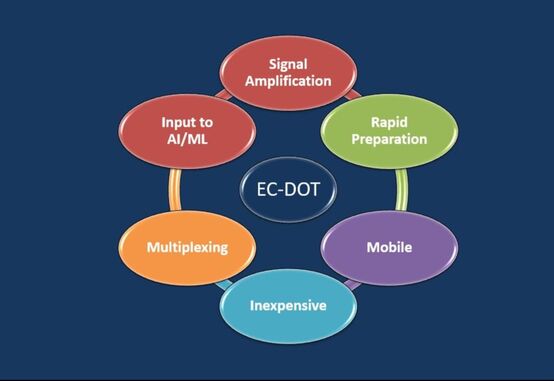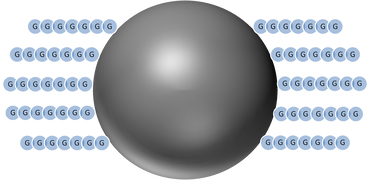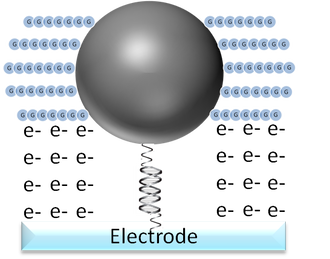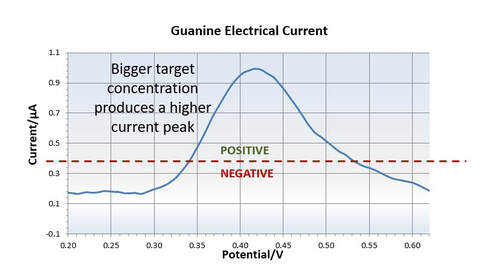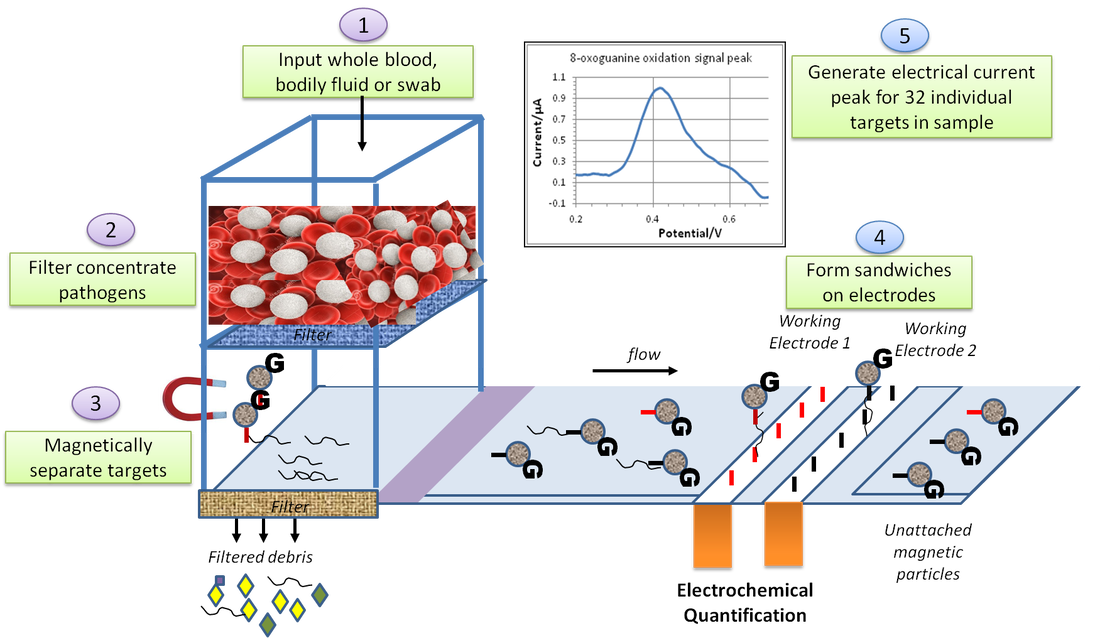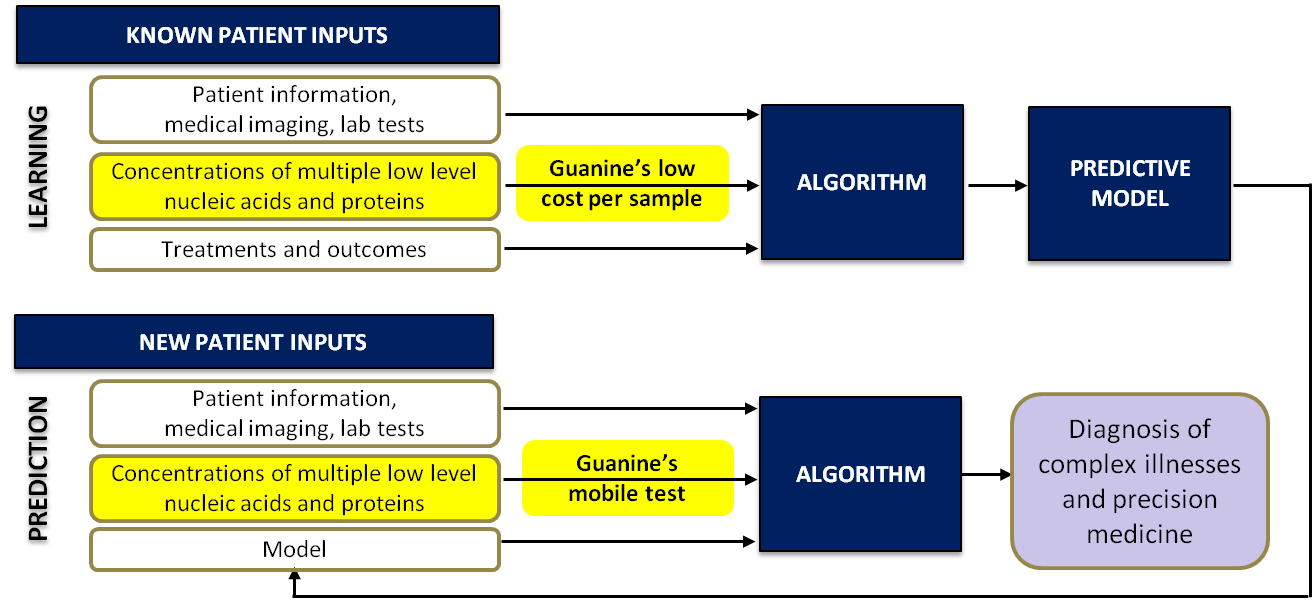|
DNA is a natural source of electrons
When DNA is damaged by oxidation its nucleotide molecules such as guanine emit electrons as they transform into derivative products. The DNA oxidation process is similar to iron rusting. DNA oxidation can also be caused by voltage. When DNA is exposed to voltage it emits a burst of electrons that creates an electrical current. |
Synthetic DNA is an artificial source of electrons
Electrochemically detectable oligonucleotide tags (EC-DOTs) provide a new generation of nucleic acid and protein assays. Targets are bound to microparticles conjugated with millions of EC-DOTs. When voltage is applied a burst of electrons produces an oxidation peak proportional to the target’s concentration. This allows fast and accurate quantification. |
|
Signal Amplification
Optical tags are replaced with Guanine's magnetic microparticles that are pre-conjugated with millions of guanine-rich electrochemically detectable oligonucleotides (EC-DOTs) for detecting low levels without PCR. Magnetic particles bind targets and nonspecific materials are rinsed away when a magnetic field is applied. Filter concentration of large sample volumes provides 2 logs or more targets for detection. This improves accuracy especially when targets in the sample are heterogeneous and could clump to nonspecific materials. |
|
Mobile and Inexpensive Quantification An amperometric technique generates an oxidation peak proportional to the concentration of the targets from the bound EC-DOTS. A pre-calibrated formula converts the current peak to the target concentration. The target is present when the electrical current peak exceeds a threshold. |
|
Multiplexing
A sensor with multiple electrodes is used to detect and quantify 32 nucleic acid targets and/or protein biomarkers from a single sample. The system can also make of electroactive adenine, thymine and cytosine sequences to generate four signal peaks on the same electrode for even higher multiplexing. |
|
Input to AI/ML
Guanine's quantitative syndromic test results can be used as input data to create and train machine learning models along with patient information and treatments.
|

